17 Once-In-A-Lifetime Wildlife Adventures Around The World
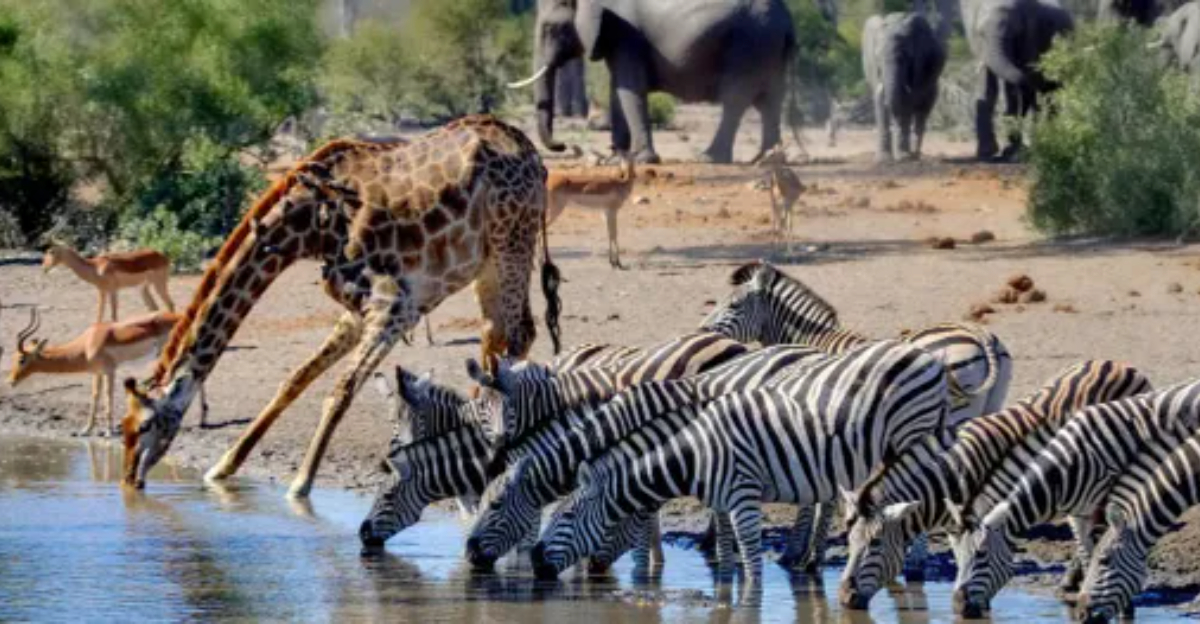
Have you ever locked eyes with a wild animal in its natural habitat and felt that electric moment of connection? It’s the kind of encounter that stays with you forever. Across every corner of the globe, from the African savannah to the jungles of Borneo, nature offers us front-row seats to some of its most awe-inspiring performances.
These wildlife adventures aren’t about ticking animals off a list—they’re about immersing yourself in the untamed, feeling the pulse of the planet, and witnessing the raw beauty that still exists beyond city limits.
Join me as we explore unforgettable journeys that not only inspire wonder but also deepen our understanding of why protecting these wild spaces is more urgent than ever. Ready to feel small—in the best way possible?
1. Dance with Darwin’s Discoveries in the Galápagos Islands, Ecuador
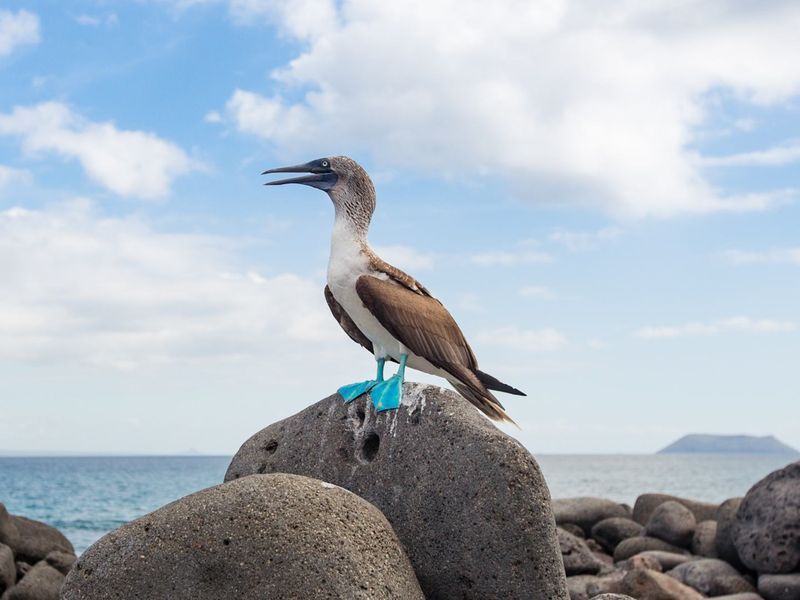
The Galápagos Islands feel like stepping into nature’s laboratory where evolution’s secrets reveal themselves at every turn. Marine iguanas snort salt from their nostrils while blue-footed boobies perform comical mating dances right at your feet.
What makes this adventure extraordinary is the animals’ fearlessness. With no natural predators, creatures here never learned to fear humans. You’ll swim alongside playful sea lions, observe giant tortoises that inspired Darwin’s theory of evolution, and spot unique species found nowhere else on Earth.
The islands offer a rare glimpse into an ecosystem largely unchanged for millions of years – a living museum of biological marvels.
2. Witness the Great Migration Across the Serengeti, Tanzania
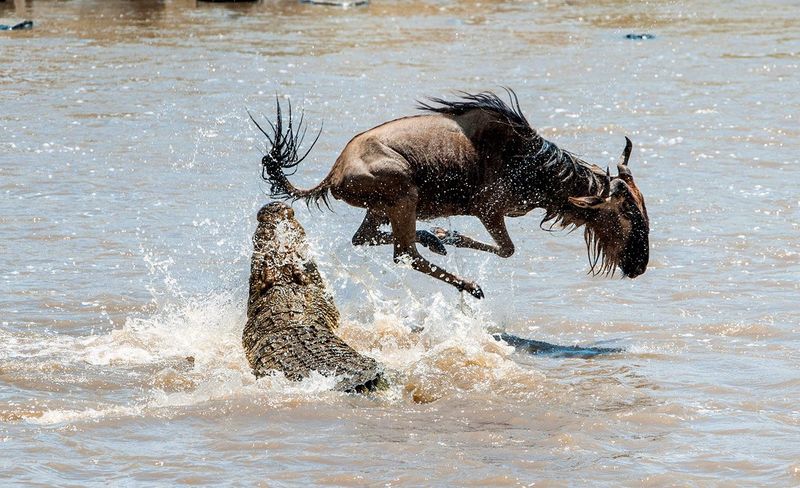
Nothing prepares you for your first glimpse of the Great Migration – nearly two million wildebeest and zebras thundering across Tanzania’s golden plains. The earth literally trembles beneath this massive movement of wildlife seeking fresh grazing lands.
If you’re lucky enough to witness a river crossing, hold your breath as animals plunge into crocodile-infested waters, creating one of nature’s most dramatic spectacles. Predators lurk everywhere – lions lounging in the shade, cheetahs scanning the horizon, and hyenas waiting for opportunities.
Balloon safaris offer a bird’s-eye view of this ancient cycle that’s been playing out for thousands of years on these endless savannas.
3. Meet Polar Bears in Churchill, Canada
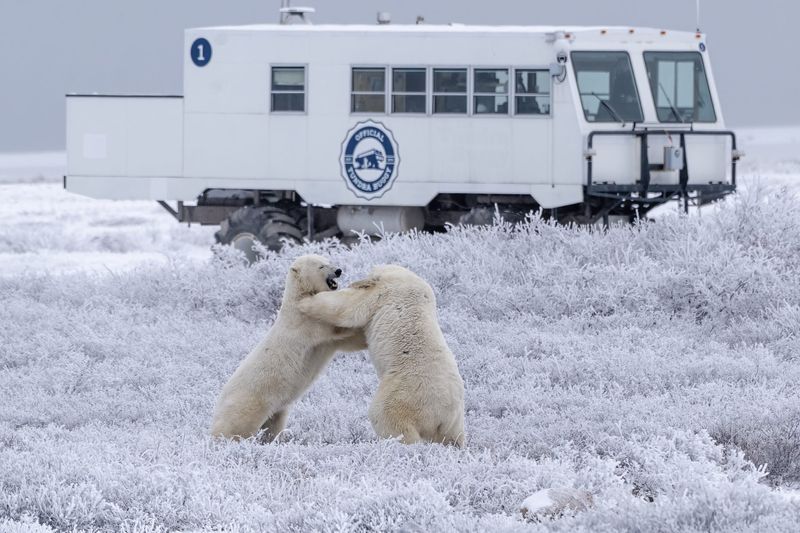
Churchill sits at the intersection of boreal forest, Arctic tundra, and Hudson Bay, creating the perfect stage for polar bear viewing. Every autumn, these massive white predators gather here waiting for sea ice to form so they can hunt seals.
Specialized tundra vehicles transport visitors safely across the frozen landscape. Through reinforced windows, you’ll observe these magnificent creatures up close – sometimes they even stand on hind legs to peer inside!
Beyond bears, the area offers northern lights dancing across winter skies and summer opportunities to snorkel with thousands of beluga whales that migrate to the Churchill River estuary. October and November offer peak bear-viewing conditions.
4. Trek Through Borneo’s Ancient Rainforests, Malaysia
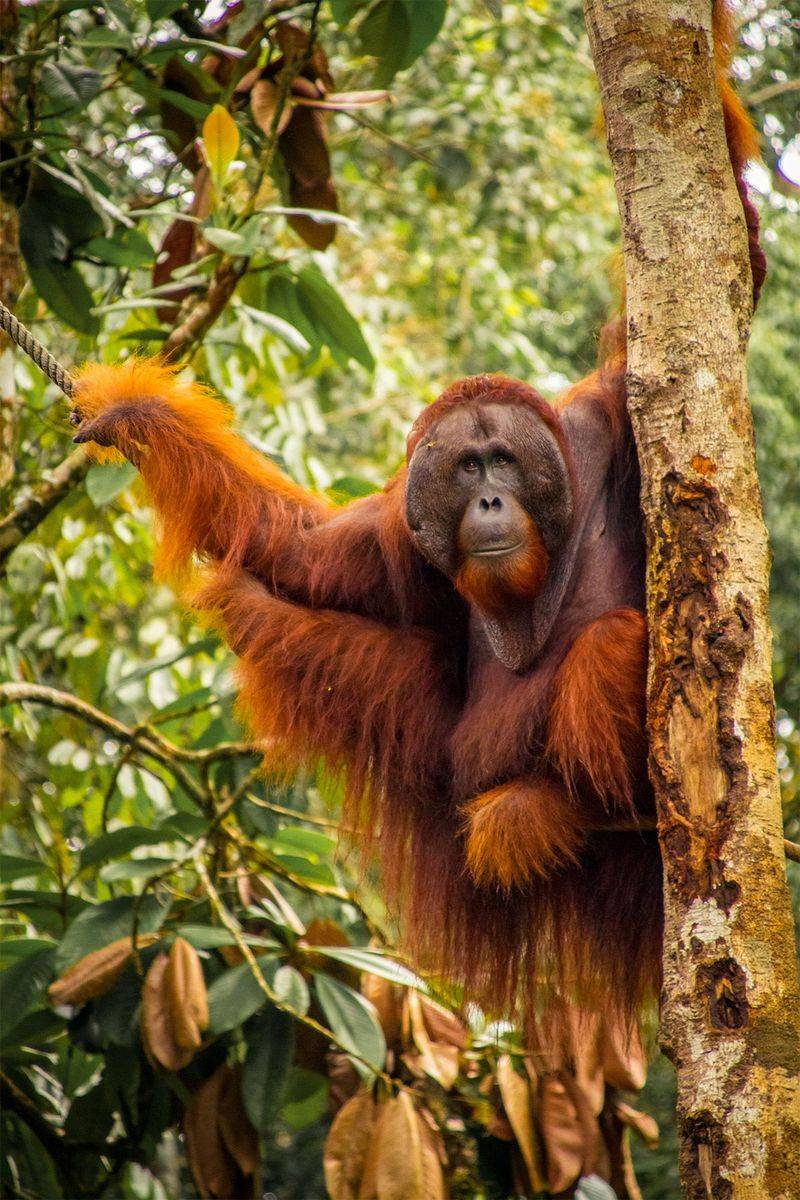
Mist hangs heavy over Borneo’s emerald canopy where wild orangutans swing through trees using the same routes their ancestors have traveled for generations. Their soulful eyes and gentle movements create unforgettable encounters in this biodiversity hotspot.
Sepilok Orangutan Rehabilitation Centre allows visitors to watch orphaned orangutans learn survival skills before returning to the wild. Deeper in the rainforest, you might spot proboscis monkeys with their distinctive bulbous noses, or pygmy elephants bathing in muddy rivers.
Nighttime brings a different cast of characters – flying squirrels gliding between trees, slow lorises with their enormous eyes, and if you’re extremely fortunate, the elusive clouded leopard prowling through the undergrowth.
5. Explore South America’s Wildlife Paradise in the Pantanal, Brazil

While the Amazon gets all the fame, Brazil’s Pantanal offers South America’s best wildlife viewing opportunities. This vast wetland ecosystem transforms seasonally from flooded marshes to savanna, concentrating animals in spectacular numbers.
Jaguars reign supreme here. These normally elusive cats have become surprisingly viewable along riverbanks, where they hunt caiman with breathtaking power and precision. Boat trips along the Paraguay River provide front-row seats to this predator-prey drama.
Giant anteaters, capybaras, and hyacinth macaws add to the biological richness. Unlike dense rainforests where animals hide among thick vegetation, the Pantanal’s open landscapes make wildlife spotting remarkably accessible for even casual nature enthusiasts.
6. Watch Yellowstone’s Wolf Packs Hunt at Dawn, USA
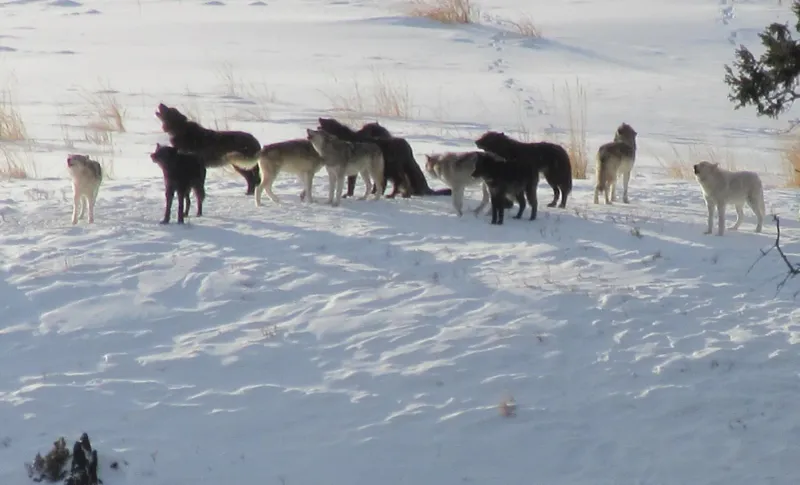
The reintroduction of wolves to Yellowstone in the 1990s created one of conservation’s greatest success stories. Early mornings in the Lamar Valley – nicknamed “America’s Serengeti” – provide incredible opportunities to witness these intelligent predators in action.
Through spotting scopes, visitors watch as wolf packs coordinate complex hunting strategies across the vast landscape. Their howls echo through the valley, a sound that was missing from this ecosystem for decades.
Beyond wolves, America’s first national park showcases grizzly bears feeding on berries, bison herds thundering across meadows, and geothermal features creating otherworldly landscapes. Winter offers especially dramatic wildlife viewing against snowy backdrops when animals concentrate in lower elevations.
7. Track Royal Bengal Tigers in Ranthambore, India
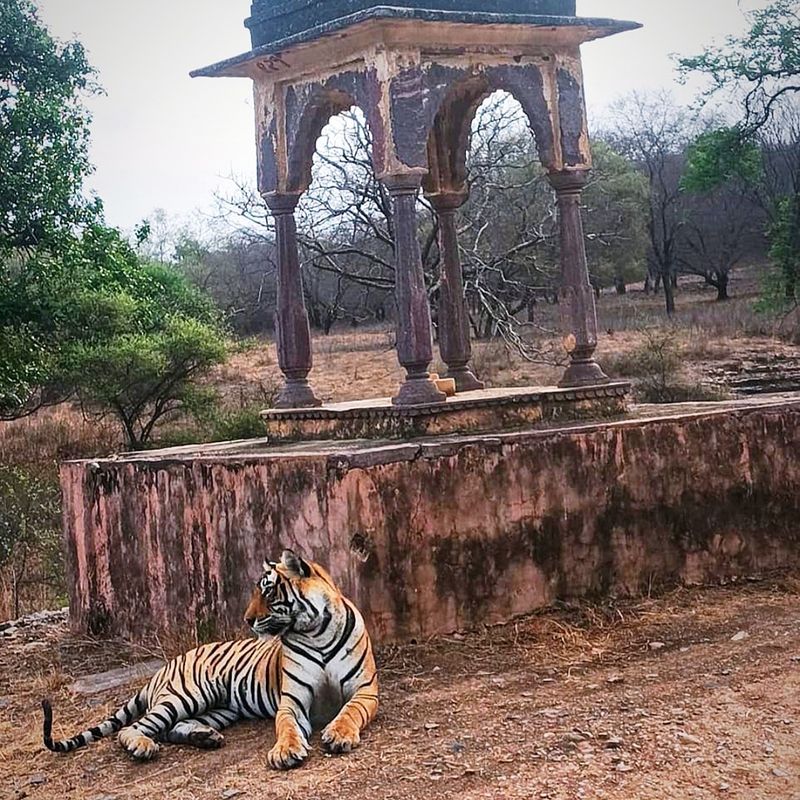
Few wildlife experiences match the heart-pounding thrill of tracking wild tigers through India’s forests. Ranthambore National Park, with its ancient ruins providing dramatic backdrops for tiger sightings, offers some of the best opportunities to witness these endangered cats.
Morning safaris begin with the forest awakening – deer barking alarm calls that signal a predator’s presence. Your guide follows these natural clues, leading your jeep through deciduous forests and grassy meadows until that magical moment when striped orange fur materializes against the landscape.
Female tigers raising cubs often become the park’s celebrities, with their territories and behaviors well-documented by researchers. Beyond tigers, the park houses leopards, sloth bears, and over 300 bird species among dramatic rock formations.
8. Cruise Among Icebergs and Penguins in Antarctica
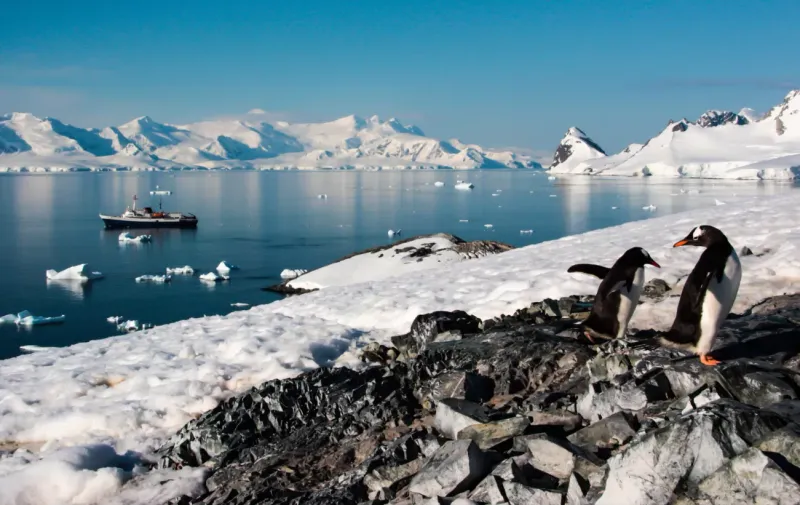
Antarctica exists in a category all its own – a continent dedicated to peace, science, and some of Earth’s most extraordinary wildlife encounters. Expedition cruises navigate through ice floes where leopard seals patrol for penguins and humpback whales surface alongside zodiacs.
Stepping ashore on the Antarctic Peninsula feels like entering another world. Gentoo, Adélie, and chinstrap penguins waddle past, completely unfazed by human visitors. Their rookeries buzz with activity – from nest-building to feeding chicks to fending off skua birds.
Massive tabular icebergs create an ever-changing sculpture garden on the horizon. The pristine environment, untouched by permanent human settlement, offers a glimpse of our planet before civilization – a powerful reminder of wilderness at its most magnificent.
9. Encounter Lemurs in Madagascar’s Exotic Forests
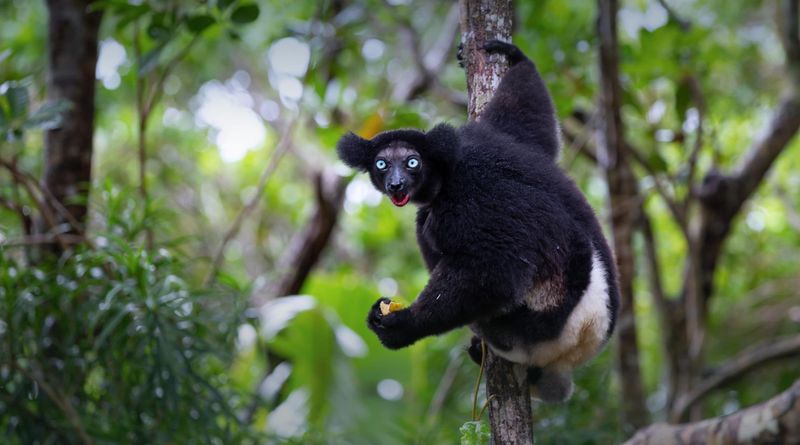
Madagascar’s isolation has created a living laboratory where 90% of wildlife exists nowhere else on Earth. Lemurs – those wide-eyed primates with distinctive calls – have evolved into more than 100 species across this island nation.
Hiking through Andasibe-Mantadia National Park brings encounters with the indri, whose haunting songs echo through the misty forests. These teddy-bear-faced creatures leap between trees with remarkable agility, their distinctive black and white fur flashing through the canopy.
Chameleons changing colors before your eyes, bizarre giraffe-necked weevils, and baobab trees with massive trunks complete this biological wonderland. Night walks reveal nocturnal species like mouse lemurs – the world’s smallest primates – and leaf-tailed geckos perfectly camouflaged against tree bark.
10. Float Along Waterways in Okavango Delta, Botswana
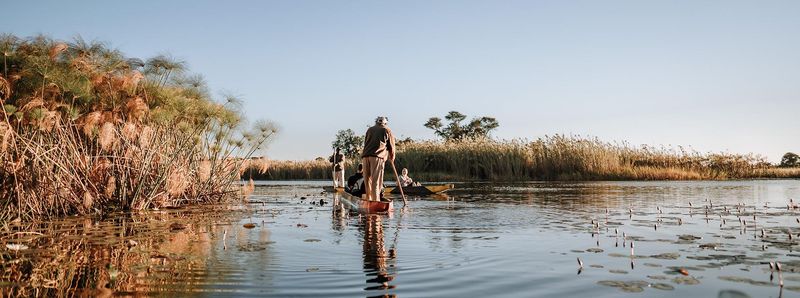
The Okavango Delta creates a miracle in the middle of the Kalahari Desert – an annual flood that transforms arid lands into a maze of channels teeming with wildlife. Traditional mokoro canoes offer silent passage through papyrus reeds where elephants feed and hippos submerge.
Water-adapted animals thrive here. Red lechwe antelopes splash through shallow waters while African fish eagles dive for prey. Islands within the delta concentrate predators – lions adapted to swimming between landmasses and leopards lounging in jackalberry trees.
Luxury safari camps blend seamlessly with the environment, offering unparalleled wildlife viewing from private verandas. The delta’s remoteness ensures authentic wilderness experiences far from crowds, with night sounds creating nature’s perfect soundtrack – hippos grunting and lions roaring under star-filled skies.
11. Safari Through Kruger National Park, South Africa

Kruger National Park stands as Africa’s ultimate self-drive safari destination where visitors can explore at their own pace across an area roughly the size of Wales. The park’s excellent infrastructure makes wildlife viewing accessible to everyone, from first-timers to seasoned safari enthusiasts.
Dawn game drives reveal lions returning from night hunts while massive elephant herds cross the savanna. The park’s diverse habitats support an astounding variety of wildlife – from the “Big Five” to over 500 bird species and specialized creatures like honey badgers and pangolins.
Waterhole stakeouts reward patient observers as animals gather to drink, creating natural drama as predator and prey share the same space. The park’s southern section offers the densest wildlife populations, while northern regions provide more solitude among baobab trees.
12. Walk Among Dragons on Komodo Island, Indonesia
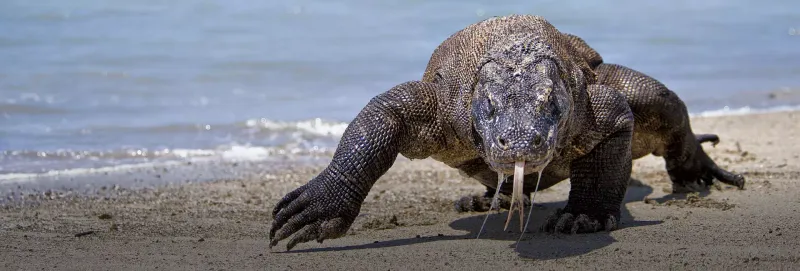
Komodo dragons – the world’s largest lizards – roam freely on just a handful of Indonesian islands, creating one of Earth’s most unique wildlife encounters. Growing up to 10 feet long and weighing over 300 pounds, these prehistoric-looking reptiles command respect and caution.
Guided walks through savanna landscapes reveal these powerful predators basking in sunshine or patrolling their territories. Their forked tongues constantly sample the air, detecting prey over vast distances. Rangers carry forked sticks for protection, a reminder that these are genuinely dangerous wild animals.
Beyond dragons, the surrounding waters offer world-class diving among vibrant coral reefs where manta rays glide gracefully. Pink beaches created by red coral fragments provide perfect spots to relax after dragon treks, with stunning views across turquoise waters.
13. Spot Grizzlies Fishing for Salmon in Alaska, USA
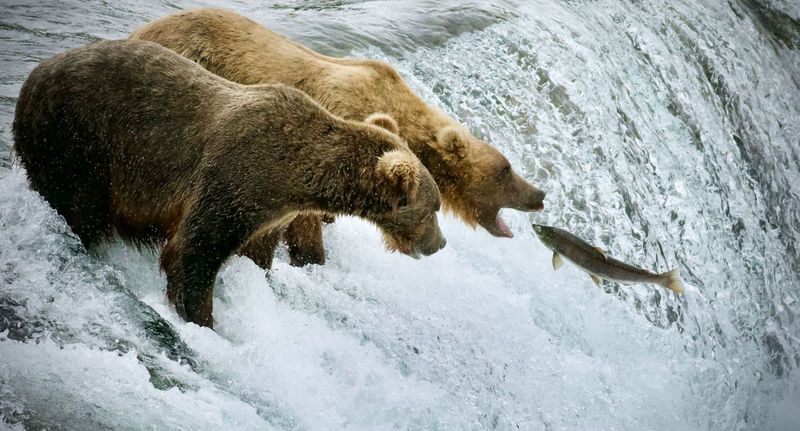
Every summer, Alaska’s rivers fill with salmon returning to spawn, creating one of nature’s greatest feeding frenzies. At Brooks Falls in Katmai National Park, brown bears gather in remarkable numbers to feast on this protein-rich bounty.
From elevated viewing platforms, visitors watch massive grizzlies employ different fishing techniques – some wait patiently as fish jump into their jaws, others dive completely underwater, while younger bears scavenge leftovers. Dominant males claim prime fishing spots, creating fascinating social dynamics.
Floatplane trips to remote rivers offer more exclusive bear-viewing opportunities away from crowds. Beyond bears, Alaska’s wilderness showcases moose wading through marshes, wolves tracking caribou herds, and bald eagles perched on towering spruce trees – America’s last great wilderness in its full glory.
14. Search for Polar Wildlife in Svalbard, Norway
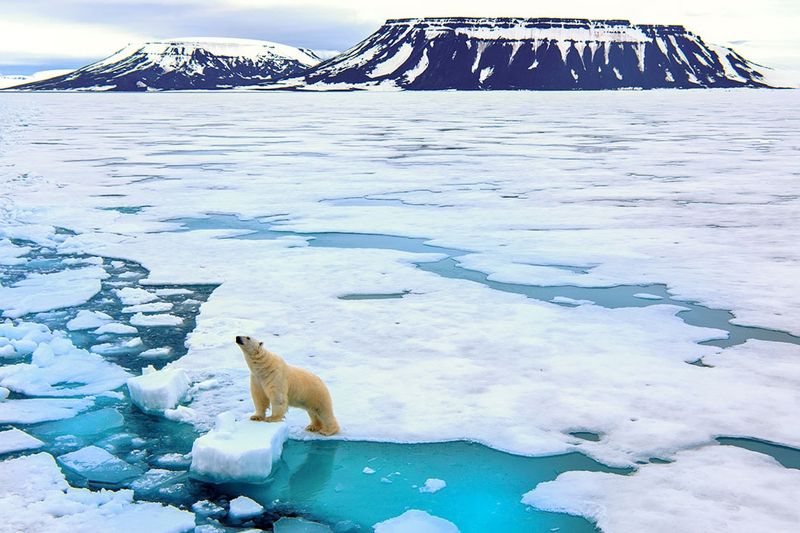
Halfway between mainland Norway and the North Pole lies Svalbard – a High Arctic wilderness where polar bears outnumber people. Expedition ships navigate through floating ice where these magnificent predators hunt seals, creating wildlife photography opportunities unlike anywhere else.
Arctic foxes in changing seasonal coats scamper across tundra dotted with colorful summer wildflowers. Massive walruses haul out on rocky beaches, their impressive tusks gleaming in the midnight sun. Towering bird cliffs host thousands of nesting seabirds in raucous colonies.
Summer brings 24-hour daylight, allowing for constant wildlife viewing opportunities. The stark landscape of glaciers calving into steel-blue waters creates dramatic backdrops for wildlife encounters. Despite the harsh environment, Svalbard showcases remarkable biodiversity in this fragile polar ecosystem.
15. Discover Ancient Rainforest Life in Daintree, Australia
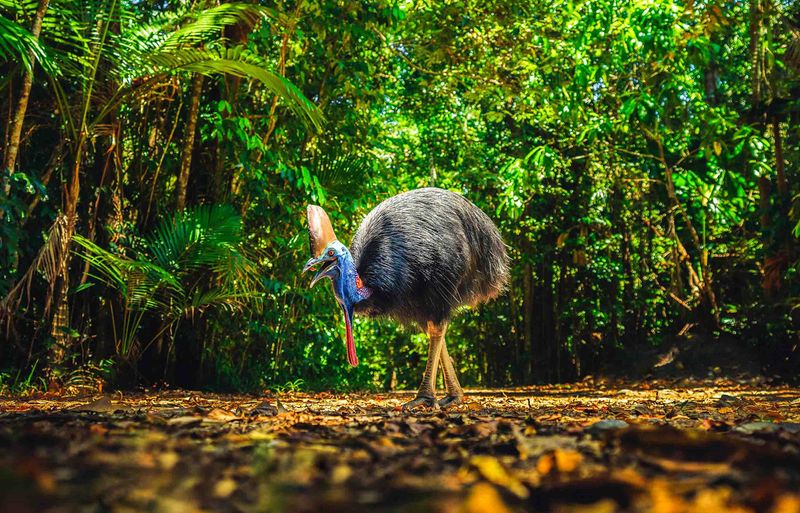
The Daintree Rainforest represents Earth’s oldest continuously surviving tropical rainforest – a living museum where ancient lineages have evolved in isolation. Where the forest meets the Great Barrier Reef, two World Heritage areas converge in spectacular fashion.
Night tours reveal bizarre creatures like the Boyd’s forest dragon and leaf-tailed geckos perfectly camouflaged against bark. Cassowaries – flightless birds standing six feet tall with dinosaur-like features – occasionally cross paths with lucky visitors.
River cruises along the Daintree River spotlight saltwater crocodiles lurking beneath mangrove roots. The forest canopy buzzes with activity – flying foxes, tree kangaroos, and over 430 bird species including the electric-blue Ulysses butterfly. Boardwalks allow visitors to explore safely while minimizing impact on this ancient ecosystem.
16. Hike Through Corcovado National Park, Costa Rica
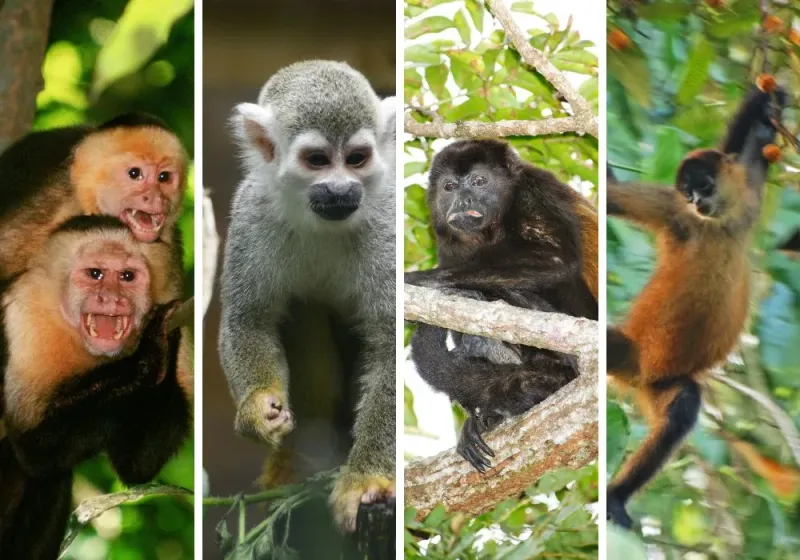
National Geographic called Corcovado “the most biologically intense place on Earth” – a fitting description for Costa Rica’s crown jewel of biodiversity. This remote rainforest on the Osa Peninsula harbors an astonishing 2.5% of the planet’s biodiversity in just 164 square miles.
Scarlet macaws flash brilliant colors against emerald canopies while four species of monkeys swing through branches overhead. Tapirs leave distinctive three-toed tracks along pristine beaches where sea turtles nest seasonally.
Hiking with local guides increases chances of spotting secretive residents like jaguars, pumas, and the endangered harpy eagle. The park’s remoteness requires effort to reach but rewards visitors with untamed wilderness experiences. Corcovado perfectly embodies Costa Rica’s conservation ethos – protecting extraordinary biodiversity while allowing sustainable visitation.
17. Trek with Mountain Gorillas in Volcanoes National Park, Rwanda

Sitting quietly among mountain gorillas in their natural habitat ranks among life’s most profound wildlife experiences. After hiking through bamboo forests on Rwanda’s volcanic slopes, you’ll spend a precious hour with these gentle giants whose expressions and behaviors feel startlingly human.
Silverback males impress with their massive size and protective nature, while infants play and tumble with the same curiosity as human children. The gorillas’ acceptance of human presence after decades of careful habituation creates intimate moments of connection with our closest relatives.
Strict conservation protocols protect both gorillas and visitors – permits are limited and expensive, but funds directly support conservation efforts. Beyond gorillas, the park’s misty mountains harbor golden monkeys, forest elephants, and over 200 bird species in this ecological treasure.
